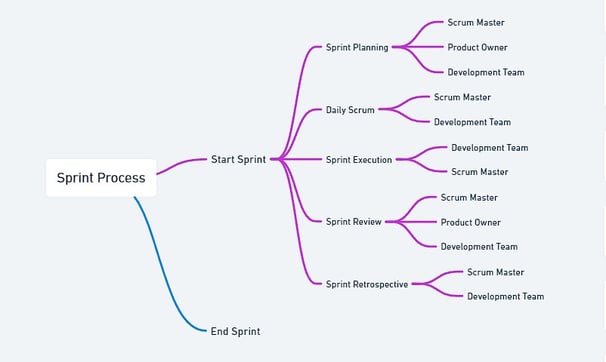Navigating the Agile Seas: Unveiling the Core Flow of Scrum Concepts
EDUCATIONPROJECT MANAGEMENTSCRUMCOMMUNITY


Embarking on the Agile journey, understanding the core Scrum concepts is akin to deciphering a well-orchestrated symphony. In this lively exploration, we delve into the rhythmic flow of Scrum, from its foundational principles to the vibrant events that define its agile cadence.
Unveiling Core Scrum Concepts:
At the heart of Scrum lie foundational concepts that form the bedrock of agile methodology. These concepts include the iterative and incremental nature of Scrum, fostering adaptability and responsiveness.
Scrum Roles:
The dynamic trio of Scrum roles - Scrum Master, Product Owner, and the Development Team - act as the pillars of this agile framework. Each role brings unique responsibilities, creating a collaborative dance that propels the project forward.
The Maestro: Scrum Master:
The Scrum Master, a guiding force, ensures the team adheres to Scrum principles. This blog unveils the vital role of a Scrum Master in orchestrating seamless collaboration and removing impediments that could disrupt the agile rhythm.
Principles that Govern Scrum:
Scrum principles are the guiding lights that illuminate the agile path. From prioritizing customer satisfaction to embracing change, these principles underpin the agile mindset that propels teams towards continuous improvement.
Product Owner: The Visionary Leader:
As the visionary leader, the Product Owner steers the ship, holding the compass that aligns the team with stakeholder expectations. We explore the critical role of a Product Owner in translating vision into actionable tasks.
Development Team and Incremental Triumphs:
Witness the crescendo of achievement as the Development Team delivers increments at the end of each Sprint. This section unpacks the significance of incremental progress and how it propels projects toward tangible success.
Scrum Artifacts: The Canvas of Progress:
Delving into the canvas of Scrum artifacts, we uncover the Product Backlog, Sprint Backlog, and Increment. Each artifact plays a distinctive role in shaping the project's narrative, from ideation to tangible outcomes.
Scrum Events: Agile Cadence in Action:
The lively rhythm of Scrum events - Sprint Planning, Daily Scrum, Sprint Review, and Sprint Retrospective - creates an agile cadence. Explore how these events synchronize the team, fostering collaboration and continuous improvement.
Sprint Planning
Setting the Stage: Sprint Planning, the overture to each iteration, sets the stage for focused endeavors. Learn how this event shapes the upcoming Sprint, aligning team efforts with project goals.
Daily Scrum
The Agile Huddle: In the Agile Huddle of Daily Scrum, teams synchronize efforts, share insights, and adapt to emerging challenges. This section explores how this brief yet impactful event keeps the agile momentum alive.
Sprint Review:
Showcasing Triumphs: A showcase of triumphs, Sprint Review is the spotlight that illuminates the Increment. Discover how this event fosters collaboration between the team and stakeholders, aligning expectations with delivered value.
Sprint Retrospective:
Continuous Improvement Curtain Call: As the curtain falls, the Sprint Retrospective takes center stage. Uncover how this event fuels a culture of continuous improvement, turning every project into a learning opportunity.
Conclusion:
In the dance of Scrum concepts, roles, artifacts, and events, the agile symphony finds its rhythm. This exploration offers a lively guide through the core Scrum elements, revealing how each contributes to the vibrant tapestry of agile project management.

